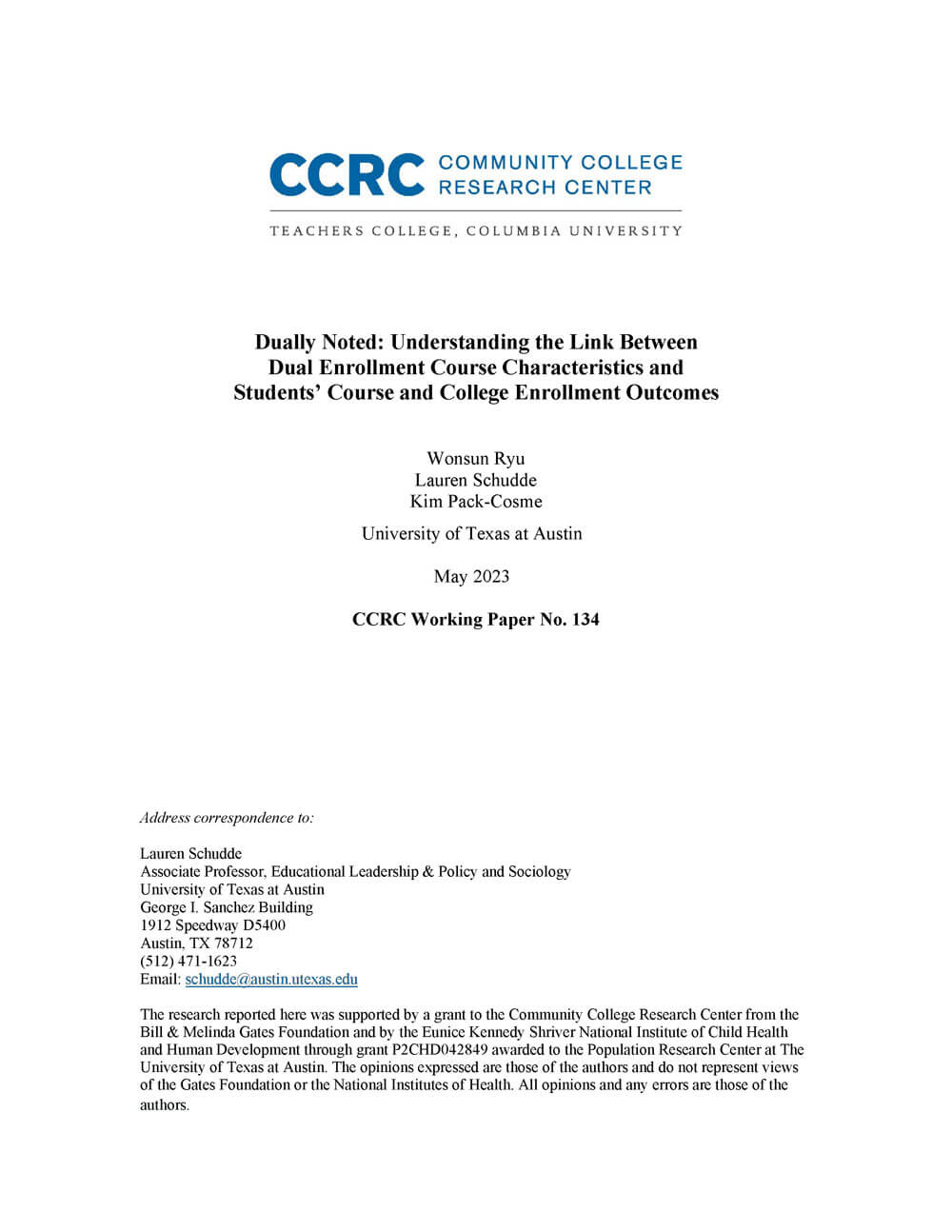
Although dual enrollment programming and interest in how that programming shapes students’ college outcomes have expanded considerably in the past 20 years, policymakers, educational administrators, and practitioners do not have adequate information about which dual enrollment structural options are most effective. Using statewide administrative data in Texas on students who entered 9th grade in 2015 or 2016 and took at least one dual enrollment course through a community college, this paper examines dual enrollment course enrollments and outcomes among recent high school entrants.
The authors first describe dual enrollment coursetaking and dual enrollment course characteristics (including instructor affiliation, course location, and instructional modality) for traditional Texas public high school students (as opposed to those attending an Early College High School or charter school), illustrating how students participate in dual enrollment (e.g., the types of courses taken and when in their high school career students take these courses) and highlighting typical course characteristics. They then examine how dual enrollment course and instructor characteristics predict student course completion, course grades, and subsequent college enrollment.
The descriptive analyses illuminate striking differences between the demographic and academic backgrounds of students who take academic dual enrollment courses versus career and technical education dual enrollment courses, as well as variation in course characteristics across these two dual enrollment course types. The regression analyses illustrate how several malleable dual enrollment course characteristics are associated with students’ course outcomes and subsequent college enrollment. The relationships that are identified offer insights for the design of dual enrollment courses and programs.
A version of this paper appears in American Educational Research Journal.
